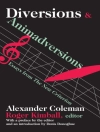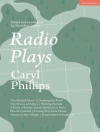Although the preoccupation of Gothic storytelling with the family has often been observed, it invites a more systematic exploration. Gothic kinship brings together case studies of Gothic kinship ties in film and literature and offers a synthesis and theorisation of the different appearances of the Gothic family.
Writers discussed include early British Gothic writers such as Eleanor Sleath and Louisa Sidney Stanhope as well as a range of later authors writing in English, including Elizabeth Gaskell, William March, Stephen King, Poppy Z. Brite, Patricia Duncker, J. K. Rowling and Audrey Niffenegger. There are also essays on Dutch authors (Louis Couperus and Renate Dorrestein) and on the film directors Wes Craven and Steven Sheil.
Arranged chronologically, the various contributions show that both early and contemporary Gothic display very diverse kinship ties, ranging from metaphorical to triangular, from queer to nuclear-patriarchal. Gothic proves to be a rich source of expressing both subversive and conservative notions of the family.
Gothic kinship will be of interest to academics and students of European and American Gothic in literature and film, gender studies and cultural studies.
Inhoudsopgave
1. Introduction – Agnes Andeweg and Sue Zlosnik
2. Matriarchal picture identification in first-wave British Gothic fiction – Kamilla Elliott
3. ‘Those most intimately concerned’: the strength of chosen family in Elizabeth Gaskell’s Gothic short fiction – Ardel Haefele-Thomas
4. The mad woman in the attic of Labuwangi: Couperus and colonial Gothic –Rosemarie Buikema
5. Seed from the east, seed from the west, which one will turn out best? The demonic adoptee in The Bad Seed (1954) –Elisabeth Wesseling
6. ‘Children misbehaving in the walls!’ or, Wes Craven’s suburban family values – Bernice M. Murphy
7. Fathers, friends, and families: Gothic kinship in Stephen King’s Pet Sematary – John Sears
8. Sisterhood is monstrous: Gothic imagery in Dutch feminist fiction – Agnes Andeweg
9. The political uncanny of the family: Patricia Duncker’s The Deadly Space Between and The Civil Partnership Act – Anne Quéma
10. Violent households: the family destabilised in The Monk (1796), Zofloya, or the Moor (1818), and Her Fearful Symmetry (2009) – Joanne Watkiss
11. ‘As much a family as anyone could be, anywhere ever’: revisioning the family in Poppy Z. Brite’s Lost Souls – William Hughes
12. Gothic half bloods: maternal kinship in Rowling’s Harry Potter series – Ranita Chatterjee
13. ‘They fuck you up’ – revaluations of the family in contemporary British horror film: Steven Sheil’s Mum & Dad – Johannes Schlegel
Index
Over de auteur
Sue Zlosnik is Professor of Gothic Literature at Manchester Metropolitan University












